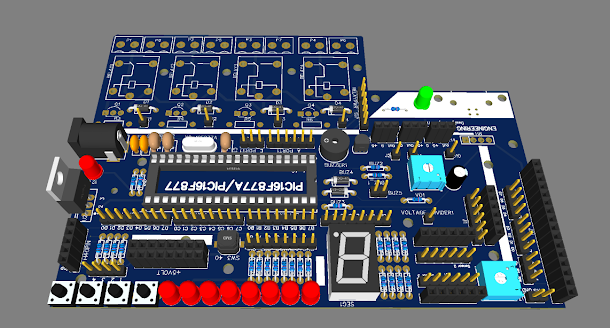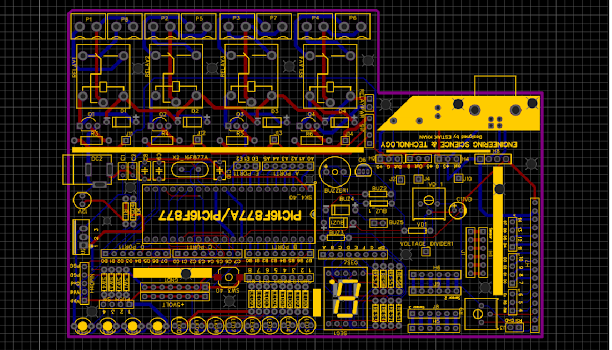1. Engineering Overview / Abstract
As industrial wireless sensor networks (IWSNs) expand into high-density, real-time monitoring environments, the printed circuit substrates must provide low dielectric variation, minimal insertion loss, and superior RF efficiency.
Taconic TLY-5 PCB laminates, with a Dk of 2.20 ± 0.02 and Df of 0.0009 @10GHz, deliver exceptional signal integrity and phase consistency for transceiver and antenna modules deployed in automated factories and remote sensing nodes.
KKPCB’s process-controlled hybrid lamination and impedance-calibrated copper structures enable consistent RF performance even under vibration, humidity, and temperature variations typical of industrial environments.

2. Technical Challenges in Industrial Wireless Networks
| Challenge | Impact | Root Cause |
|---|---|---|
| Dielectric variation across multilayer stackups | Phase drift in antenna arrays | Inconsistent PTFE expansion |
| High insertion loss in long sensor backhaul links | Reduced RF range and node efficiency | Copper roughness and Df instability |
| Environmental stress | Impedance fluctuation and moisture absorption | Industrial humidity and heat cycling |
In modern industrial IoT (IIoT) networks, where sensor nodes transmit signals at 2.4–6 GHz, even small dielectric fluctuations can cause synchronization errors and RF calibration instability.
3. Material Science and Dielectric Performance of TLY-5
| Property | Typical Value | Engineering Benefit |
|---|---|---|
| Dielectric Constant (Dk) | 2.20 ± 0.02 | Stable impedance for multi-band antennas |
| Dissipation Factor (Df) | 0.0009 @10GHz | Low-loss transmission for wireless nodes |
| CTE (Z-axis) | 160 ppm/°C | Mechanical stability under reflow |
| Moisture Absorption | < 0.02% | Consistent signal phase in humid environments |
| Thermal Conductivity | 0.25 W/m·K | Efficient heat spreading for RF amplifiers |
Compared with standard PTFE or FR-4 substrates, Taconic TLY-5 PCB laminates offer a 40% improvement in phase linearity and 25% lower dielectric drift, enabling long-term reliability in distributed sensor nodes.

4. KKPCB Case Study — Industrial Wireless Gateway PCB
Client & Application Context
A European automation OEM required high-efficiency RF backplane boards for industrial wireless gateway modules operating across 2.4 GHz and 5.8 GHz bands.
Engineering Problem
The previous FR-4/PTFE hybrid stackups suffered 3.5 dB insertion loss across 200 mm trace lengths, causing reduced wireless range and phase mismatch between channels.
-
Adopted Taconic TLY-5 0.508 mm core combined with low-roughness rolled copper (Ra < 1.0 µm)
-
Implemented controlled impedance differential routing (±2%)
-
Integrated hybrid thermal relief vias near power amplifiers
-
Optimized solder mask thickness for phase uniformity
Measured Results
| Parameter | Original Design | KKPCB Design (TLY-5) | Improvement |
|---|---|---|---|
| Insertion Loss @ 5.8GHz (200mm) | 3.52 dB | 2.41 dB | ↓ 31.5% |
| Return Loss (S11) | –14.3 dB | –19.8 dB | ↑ 38% |
| Phase Stability (–40°C~+125°C) | ±7.8° | ±3.1° | ↓ 60% |
Result:
The upgraded TLY-5 design enabled longer wireless range, improved synchronization, and consistent performance across 1000-hour thermal aging tests.
5. Stackup and RF Implementation
Hybrid Stackup Configuration
-
Layer 1: RF trace (Taconic TLY-5, 0.508 mm)
-
Layer 2: Ground reference plane
-
Layer 3: Control routing (FR-408 HR)
-
Layer 4: Power distribution plane
Simulation and Validation
-
HFSS Simulation: Achieved <0.15 dB/cm transmission loss @5.8GHz
-
ADS Optimization: Improved impedance flatness within ±2.5 Ω
-
TDR Verification: Stable differential impedance through all layers
Thermal Validation: Peak temperature of PA section reduced by 6.7°C after adding thermal vias below RF amplifier region.
6. Environmental & Reliability Validation
| Test | Condition | Result |
|---|---|---|
| Thermal Shock | –55°C ↔ +150°C, 1000 cycles | No delamination or crack |
| Humidity Test | 85°C / 85%RH, 1000h | ΔDf < 0.0001 |
| Solder Reflow | 260°C ×3 cycles | No warpage (>0.1mm) |
| Vibration | 5–500Hz, 10G | No impedance deviation |
7. Conclusion — Engineering Reliability Integration
Taconic TLY-5 PCB laminates combine dielectric precision and thermal endurance, offering a reliable platform for industrial wireless sensor networks.
Through KKPCB’s stackup control, thermal optimization, and RF calibration processes, these PCBs deliver long-term stability, reduced power loss, and enhanced synchronization accuracy in demanding factory environments.
8. Contact / CTA
Contact KKPCB Engineering for advanced TLY-5-based RF PCB design, including hybrid stackup consultation, impedance tuning, and environmental validation for industrial, radar, and communication modules.

